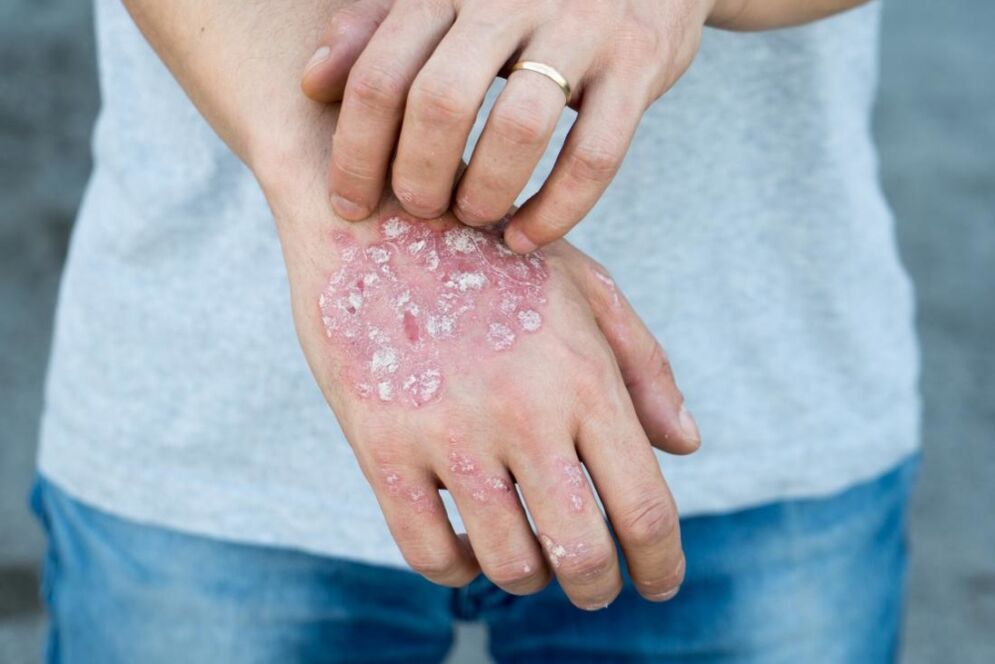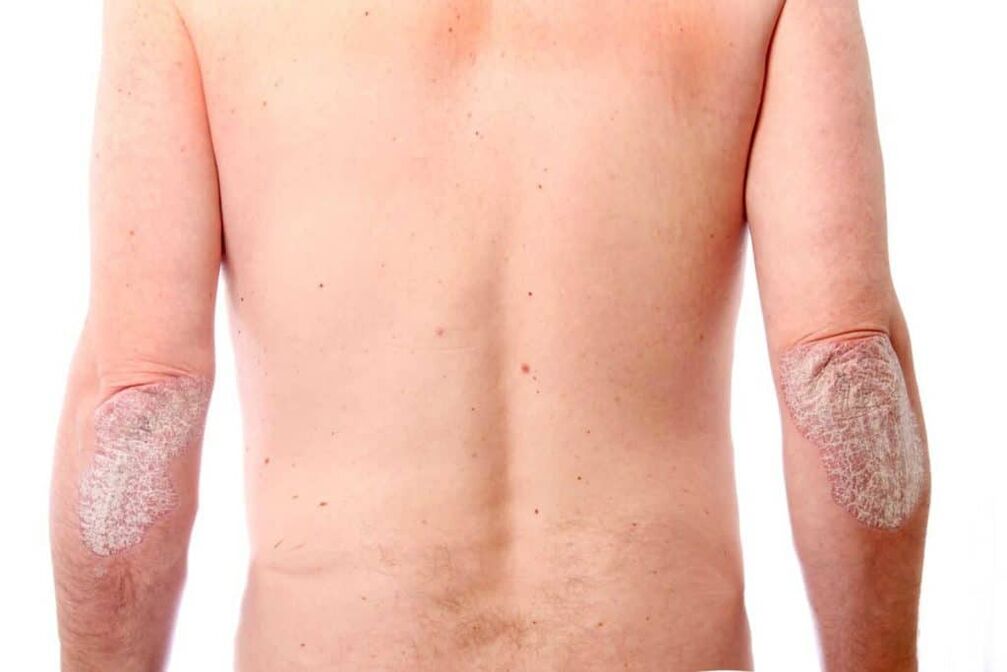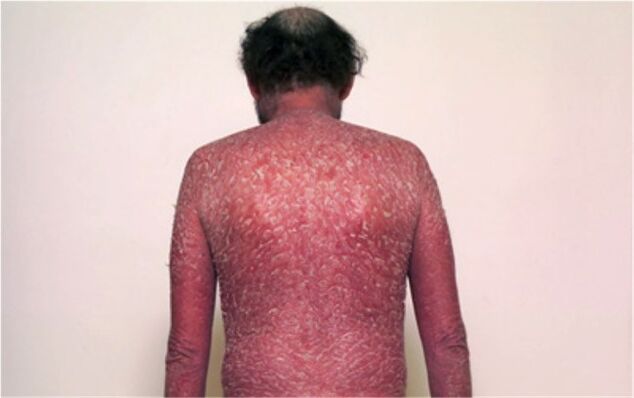Psoriasis is one of the most common chronic skin catology in the world and the problem of treatment remains urgent.According to statistics, 130 ml of cases in the world have been registered in 2017: the planet has twenty -four fourth inhabitants.Pathology debut usually lasts from 16 to 20 and falls 40-60 years.65% of patients are observed in mild form and affects the skin slightly (up to 3%).The average rate of psoriasis suffers from 25% (up to 10% of the skin area) and is severe, with more than 10% of the surface -8%.

The exact cause of the disease has not yet been examined.It is assumed that parasitic infection, allergic predisposition, hormonal imbalance, metabolism and inheritance can provoke the appearance of psoriasis plaques.
In childhood, it is a tendency for psoriasis if one parent is patient, 25%.If both - the probability increases to 50%.According to statistics, 4 of the 100 children in the world are psoriasis and boys, less frequently than girls with 25%.
The list of harmful factors includes the negative effects of infectious diseases, neuropsychic injuries and low temperatures.
As a result of the interaction of many external and internal causes, the blood circulation of the dermis papillary layer is violated, from which the reproduction of young and non -mature epidermal cells occurs so quickly that they have no time to finally feel, accumulate on the surface in the form of silver -white plaques or in a drop -shaped form.
The disease progresses so much that they unite over time and turn into large spots.
Psoriasis holds all life and is unique for suicide.The periods of remission alternate with aggravation, which is more often observed during the fall winter.But there are indefinite (all -season) and photosensitive (summer) cases.
Stage
In the pathological process of psoriasis, there are several periods of periods and the wave -like paths with alternation of aggravation and remission cycles.For professionals, the diagnosis of the disease is not difficult: it has special, specific symptoms and a characteristic skin type at different stages of pathology development.
The initial stage
At first, when the disease is just beginning to appear, no more than a tap -headed rashes (papules) appear. In psoriasis, they are grouped on the skin of the limbs, and at first they do not progress or change.These are the so -called guard (customs) plaques.

Classic clinical manifestations in the initial stages form a triad of psoriasis:
- Waxflum.The papules are covered with white plaque with gray plaque, loose and poorly fixed.It is easy to scrape a spatula.External peeling scales resemble the smallest chips of Starin materials to make candles.
- Terminal movie.A smooth, shiny, juicy hyperemic surface is visible under a loose raid.This is the last layer of cells that can leave.
- Bloody dew is the ultimate sign of the triad.If the terminal film is damaged and manifests itself externally from small blood drops in the form of condensate that do not merge with each other.
Psoriasis is a chronic disease and it is impossible to fully recover from it.The main task of treatment is to achieve a durable, long -lasting remission.The inadequate therapy of the aggravation can be observed every two to three months.At the initial stage of psoriasis, the treatment is gentle and begins with the use of keratolytic external products in the form of ointments and creams, based on salicylic acid and lactic acid.
Medicines eliminate discomfort, suppress excessive cell formation, relieve inflammation and peeling.Psoriasis will be resistant (stable) over time with certain drugs.Therefore, the medical program is reviewed after a while.This approach is called rotation - a periodic change in techniques that surrounds.
Progressive section
The second stage of the disease is the actual peak of aggravation.

The first sign - the peeling is located only in the middle of the papules and a pink whisk remains along the edges.This is a symptom of growth when individual rashes grow and merge.The second sign of progression becomes a symptom of skin reaction: 10-14 days after injury (wear, scratches), a new typical plaque appears.Progressive psoriasis is another symptom that is not observed in other stages - itching of different intensity.The progressive stage of psoriasis is treated in a hospital and includes:
- Drug drugs: antihistamines, non -steroid anti -inflammatory drugs, immunostimulants, vitamins.
- Physiotherapy: PUVA, UFO, paraffin, sulfide and radon baths.
After patients, the treatment of sanatorium resort is recommended.In particular, corticosteroids and cytostatic agents are prescribed.Psoriasis affects the nail plates.They are fragile, dull, rising above the bed.Usually, this disease also causes minor damage.
Stationary section
After the progression, the papules would be healed by the end of the fourth week.It begins from the center to the periphery and the plaques obtain a characteristic ring form.Their color will be less intense, new formations will not appear.The stationary stage of psoriasis does not cause any special discomfort.The patient is not painful, no itching.The therapeutic program remains unchanged.There are only minor adjustments that reach one goal: to give them the opportunity to enter the final stage and not to transform it into the progressive phase of psoriasis.

Faded section
After complex and intensive care, the remission occurs and the disease is involved in the hidden phase.In the final phase, psoriasis peel disappears, and the plaques get a faint shade.They gradually solve and merge with the skin.Exception - so -called "frozen" dads remain on the elbows, knees, stomachs and bottoms.The period of remission is individual and can last from three months to several years.Patients with psoriasis should pay attention to the first signs of aggravation to seek medical attention and treat.Although chronic disease is prone to relapse, psoriasis, with all recommendations, allows you to live a normal and rich life.























